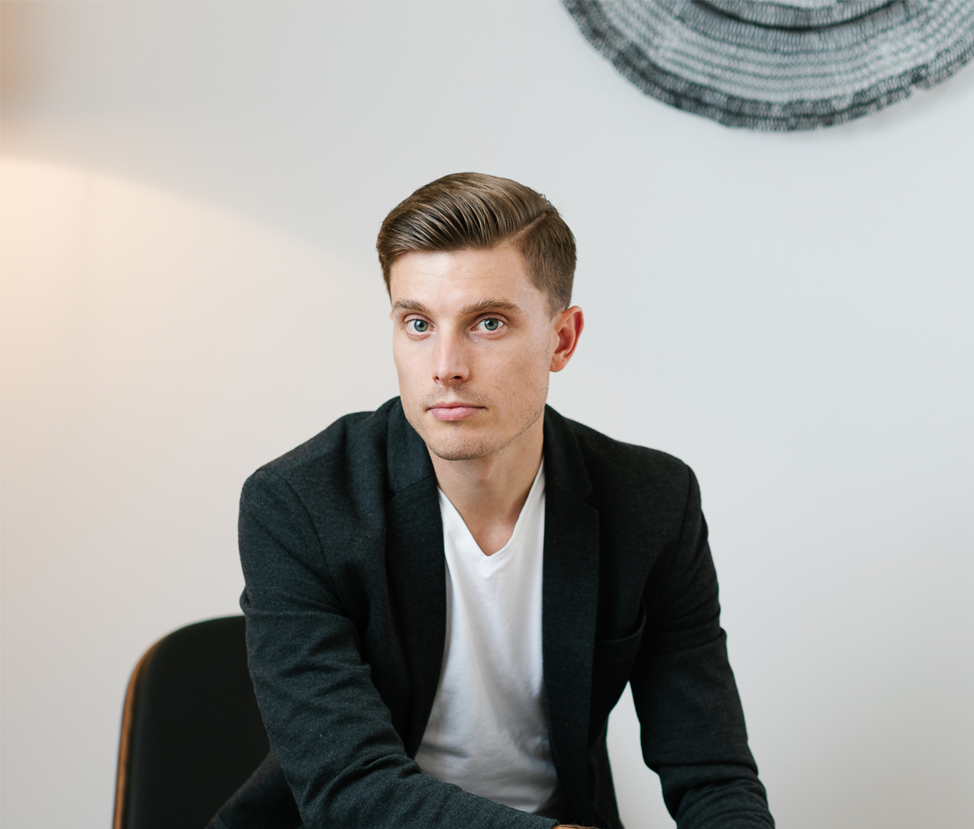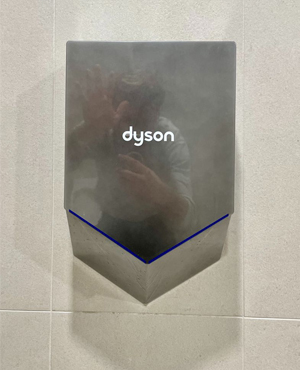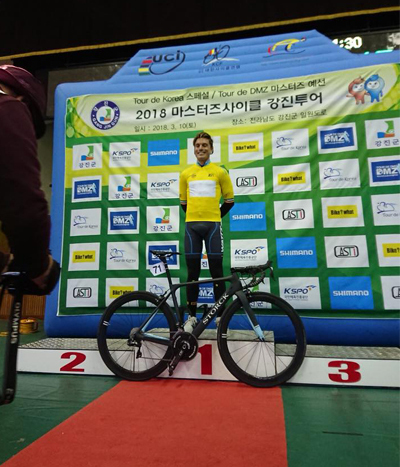12 September 2022
Next time you use an Airblade hand dryer, spare a thought for the team responsible for this ubiquitous product. UniSA Alumnus Tim Rochford was part of that team and is now turning his attention to other everyday, but equally essential, items.

Tim Rochford
Asia Pacific Design Director at Schneider Electric
Bachelor of Industrial Design (Hons), Industrial and Product Design
Growing up in the Adelaide Hills, Tim Rochford enjoyed making things with his hands and figuring out how to improve them. It may have taken him three goes, breaking his coccyx twice in the process, but he eventually perfected his own zip line in the back yard.
When considering a career, Tim initially chose to study politics, philosophy and anthropology after heeding the advice of his father, a graphic artist, that he could “be anything, but don’t be a designer”. On completion of his degree Tim headed overseas for a couple of years which not only gave him a more worldly perspective, but also greater exposure to product design, which proved to be his true calling.
“Industrial designers have an incremental approach to problem solving,” says Tim, who on his return to Australia sought out a course that reflected his interests, and in 2006 he enrolled at UniSA. Being a bit older he already had any “time wasting” out of his system and remained focused on his studies which included Honours “crammed” into his fourth and final year.
Graduating at the time of the Global Financial Crisis, Tim applied for “hundreds” of jobs in Australia without success. “Industrial designers exist to partner with large scale manufacturing, which is not that great in Australia, even at the best of times, so I was pushed to look further afield.” On the list of the top three companies he would like to work for was British industrial design brand Dyson, so he gave them a call.
Dyson informed him they were indeed hiring but he would have to appear in person. Tim agreed to fly himself to the UK but asked for one phone conversation in the meantime. Late one Friday night he spoke with the hiring manager and shortly afterwards received an email stating they had “come to a decision as to your progression options”. He then had to wait until the following Tuesday to confirm that he had been offered a position. Three weeks later he was on a plane to London.
“UniSA has quite a big workshop, which may now be considered a bit of a dinosaur when everything has to be – must be – digital, but if you learn to make things and figure out how it works, you’re already three steps ahead of anyone sitting on a computer arranging pixels. I think the fact that I had actually made my grad project really helped my Dyson application.”
It was not until Tim arrived in “Disneyland for people like me” that he discovered he was to be part of James Dyson’s personal new product innovation team. “We were meeting with him regularly, presenting ideas … him tearing them apart, literally sometimes. There was no babysitting – we were treated like adults from day one and expected to be productive.”

office towers, airports, sport stadiums, even on boats,
around the world, as evidenced by a recent post on Tim’s social media
The facilities were impressive with prototyping machines and workshops, and the work quite physical. It was here that Tim was involved with the team addressing issues with previous iterations of Dyson’s Airblade.
He also worked on Dyson’s first robotic vacuum cleaner. “It’s complex, smart technology with a footprint that’s relatable and interesting. It may be a high-tech product, but people give it a personality,” says Tim who admits to talking to his own vacuum, but his dog remains wary of any interaction.
Unsurprisingly, Dyson is a very competitive place to work so when approached by a recruiter to join Herman Miller, a company renowned for working with famous designers, Tim made the change. His role was to support the designers and work on the “less sexy” projects. He found it a great learning experience due to the company’s focus on design and designers. Where Dyson had been very tech-focused, Herman Miller was “really looking at people” and Tim found they were using some of the anthropological methods he had studied.

environment, Tim found some release in continuing
his interest in cycling, competing in that country
and in China with notable success
Once again, the recruiters came knocking, this time on behalf of Samsung who wanted to establish a design innovation team in South Korea. Working in Asia had been one of Tim’s goals and he stayed for four years. “One of the reasons I studied design is that you don’t need to be certified by a national body – if you have the skills, you can travel and work anywhere.” Another reason for staying longer than the average expat is that this is where he met his partner Jeongmi Kim. There were also opportunities to further his amateur cycling career, with significant success.
As Tim explains it, Samsung had hundreds of very talented designers and even more engineers, but they weren’t able to communicate effectively. Tim’s goal was to help the designers retain a problem solving, user-centric approach, explaining to engineers why a product was the way it was and dispelling arguments that it was too complicated or expensive. “Design is not just about look and feel, it’s rooted in something concrete.” Again, Tim’s experience in building prototypes was a benefit and they built a kitchen and living room in the workshop so products could be quickly built, tested and tweaked.
And then he got a call asking him to return to Adelaide to join Schneider Electric, “the biggest company you’ve never heard of”, who had recently purchased Clipsal. Originally reluctant, Tim was patiently convinced of the potential of the humble light switch. “When you bring design to a company where there hasn’t been a tradition of design, you can make a huge difference. Everyone interacts with a light switch every day – it’s good for the ego but also a tremendous responsibility if you screw it up.”
When Clipsal was approached by the producers of television program Australia by Design: Innovations to submit some of their product, Tim found synergy in their approach and was invited on board as a presenter and judge. The series first aired in July this year and showcases design and creativity at all levels, from large corporations to backyard inventors.
Tim now has a team in South Australia managing the Clipsal brand and has turned his attention to India. The latest acquisition there is involves electrical distribution, traditionally purely functional, and potentially dangerous, but it can only benefit from “bringing design to where it’s never been before.”
So, what does Tim see on the horizon?
“Systems design is where I think the future is going – particularly the way cities are designed. Cities used to be designed around roads and cars and parking … with a priority to get people in, which is a tremendous waste of time, energy and resources. But COVID-19 has started this decentralisation. Industrial designers design things for people and I’d like to see that user-focused approach applied to the places we live and work.”




